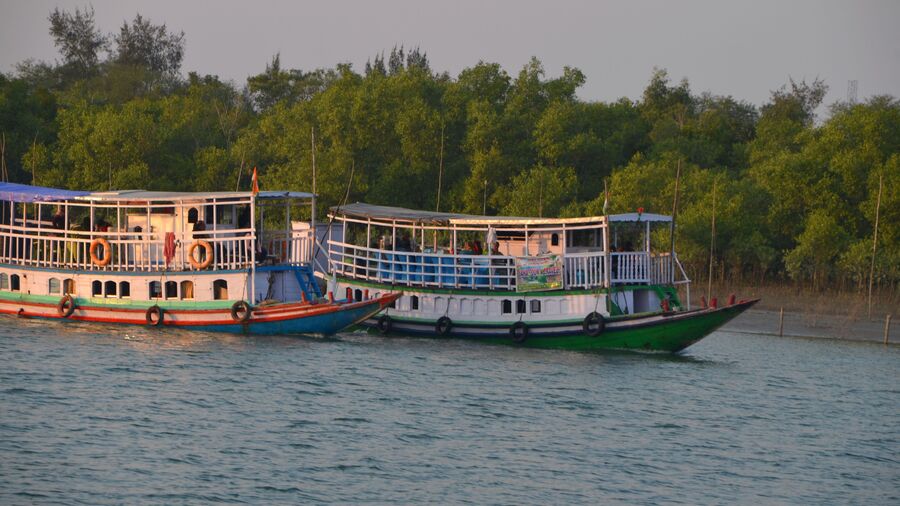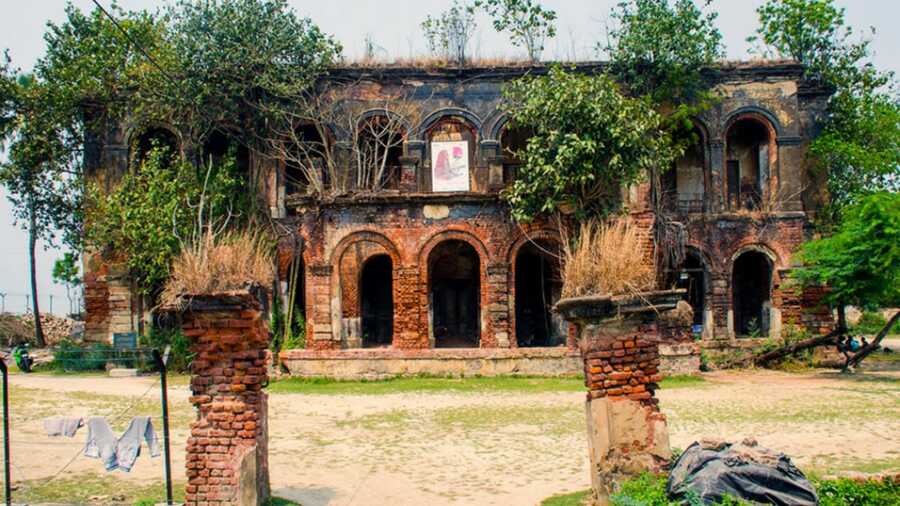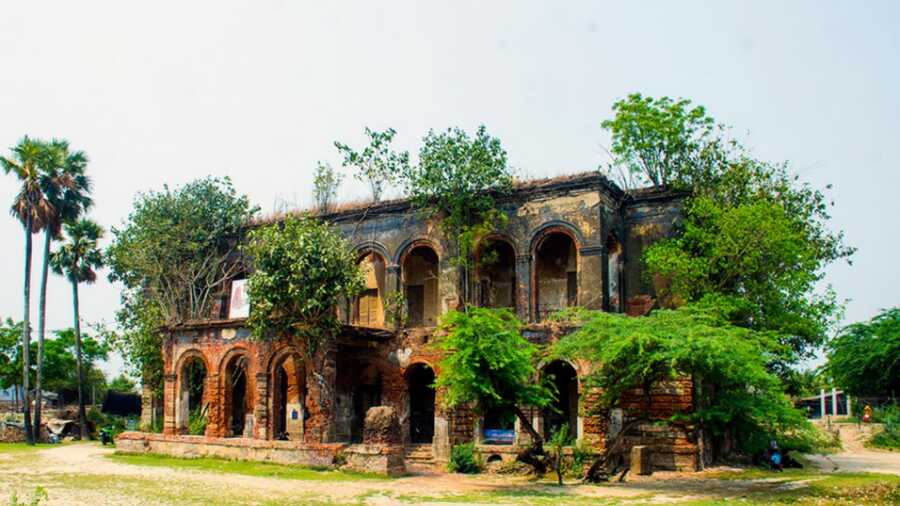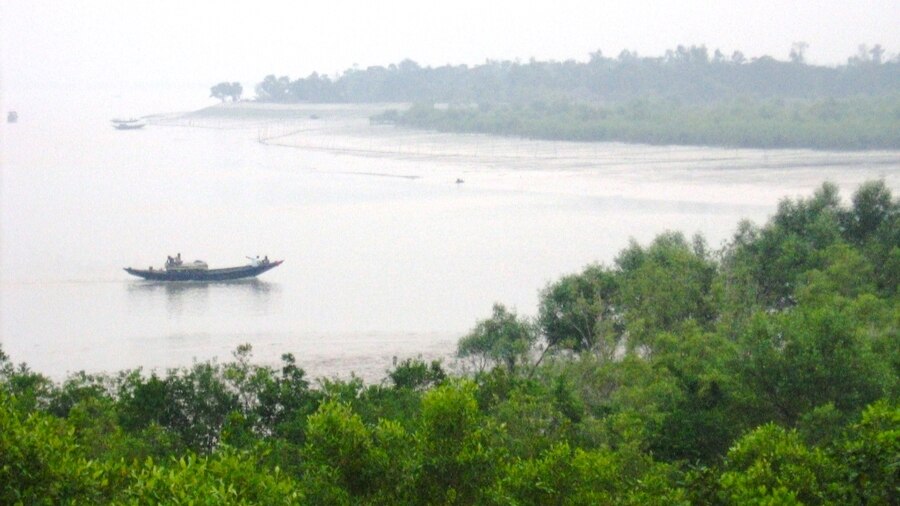The story of Kolkata is indelibly shaped by its colonial history. As a capital of British India and one of East India Company’s flourishing ports, it was often considered the second city of the British Empire.
But another little town, tucked about two hours away in the Sunderbans, came close to being a second celebrated port for colonial trade in the east. A red brick house in ruins is the last remaining connection to this tale of history that unfolded in Canning.
The rise of a new port

A new port deep within the mangrove forest of the Sunderbans was chosen to replace Calcutta’s port and the nearby village named Canning in the 1850s
Rumela BasuIn the early 1850s, surveyors from the East India Company were sent deep into the Sunderbans and came up with a spot for a port on the banks of the Matla river. The small fishing village on the banks of the river was to be transformed into a port that would put even Kolkata in the back seat. The village was named Port Canning, after the then Governor General Charles Canning.
Plans were temporarily derailed by the mutiny of 1857, but soon started again under the supervision of Lord Canning, now Viceroy of India. The port began operating in the early 1860s and was connected to Kolkata by rail. Land investment options were set up and plans drawn for hotels, promenades, parks and tram tracks.
The fall of a port town
Among the opposition to Canning’s plans were the warnings of a sea captain called Henry Piddington, who finds a mention in modern times in Amitav Ghosh’s novel The Hungry Tide: “Before coming to India, Piddington-saheb had lived in the Caribbean, and somewhere in those islands he had fallen in love — not with a woman nor even with a dog, as is often the case with lonely Englishman living in faraway places. No, Mr Piddington fell in love with storms.”
When the experienced sea voyager heard about the ambitious project of Port Canning, he smelled disaster. He predicted that a cyclone would destroy the port, located too deep inside a mangrove forest, within 15 years. Piddington's letters to officials and words went unheeded.

A sketch of Henry Piddington by Colesworthey Grant in 1839 in the ‘India Review’
Wikimedia CommonsA cyclone did hit in 1867, much earlier than Piddington had predicted. It was not one of the great cyclones common in the Bay of Bengal but a milder tidal surge, yet enough to destroy the entire port. The port could not recover and was abandoned in 1871.
A town in the Sunderbans

The building is locally known as Canning House or Lord Canning’s House
Rangan DattaCanning, today, is a little town at the edge of the Sunderbans and a gateway to the mangrove forests, about two hours from Kolkata. Just two kilometres north of Canning railway station, stands a mansion in ruins, known locally as Lord Canning’s House or the Canning House.
Was this building the office for Port Canning? And did Lord Canning really live here? It seems unlikely that the Viceroy of India would live at the edge of a malaria-causing, tiger-populated jungle. There are no records to verify either story.

The two-storied mansion is under the protection of the West Bengal Heritage Commission
Rangan DattaThe two-storied crumbling brick building has an arched porch and 22 rooms. It is presently under the protection of the West Bengal Heritage Commission, and boards in English and Bengali put up outside document its history. There are plans to restore the building and the hope is that this last remaining connection to British India’s disastrous Port Canning project can be restored to its former glory.








